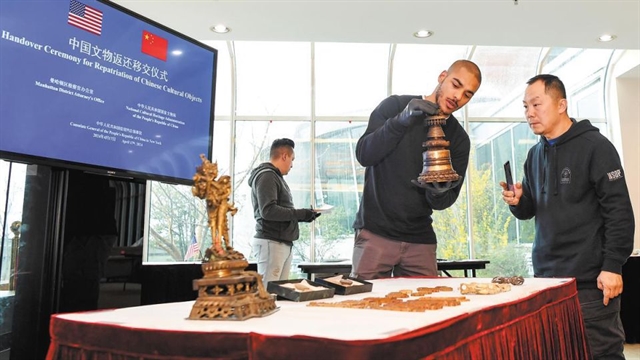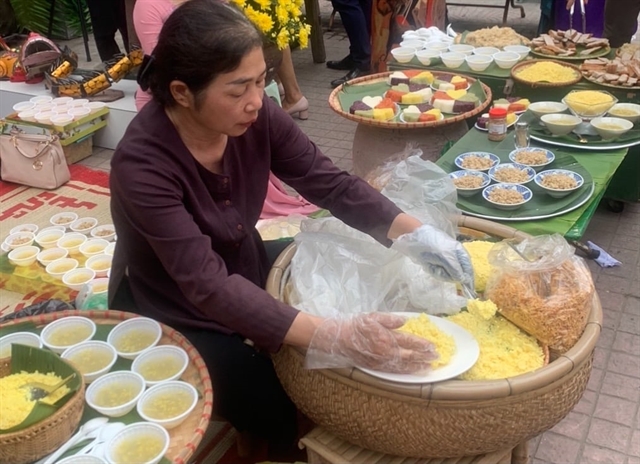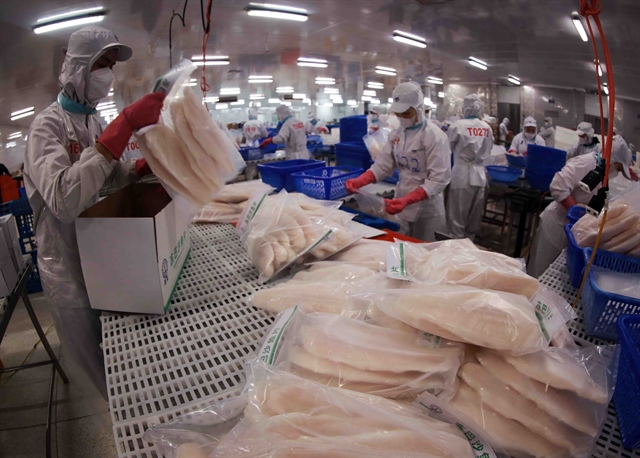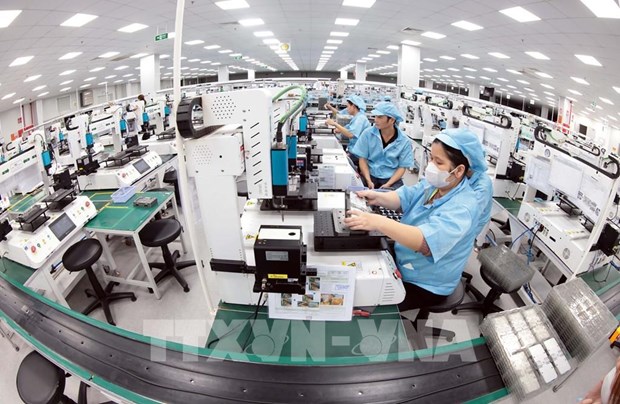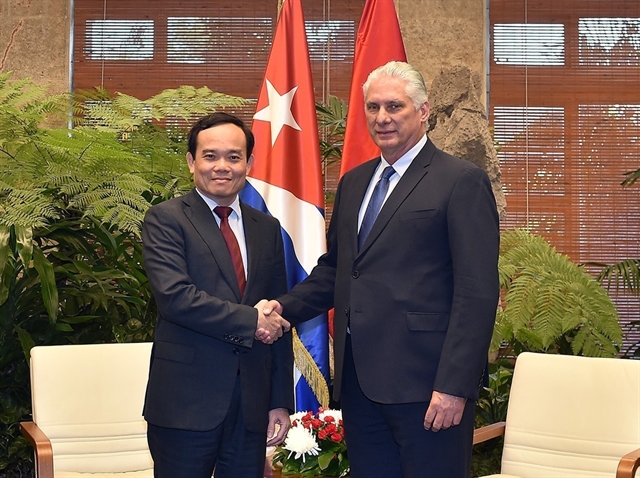 Features
Features

The "secrets" of the Thăng Long Imperial Citadel complex, including the ancient citadel itself, are continuing to reveal themselves to archaeologists from the Thăng Long - Hà Nội Heritage Conservation Centre and the Institute of Archaeology.
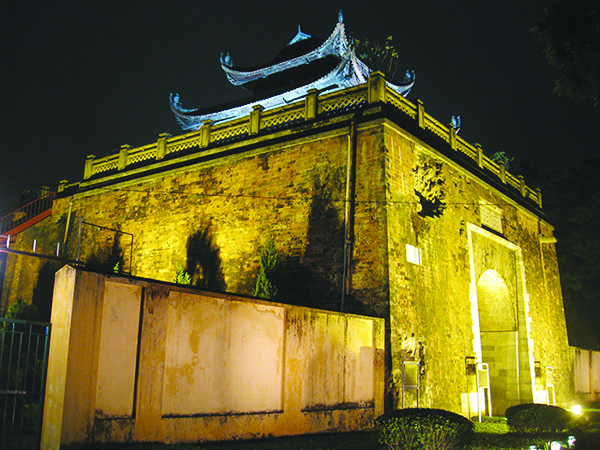
|
| IMPOSING: Archaeologists have discovered many new items from the pre-Thăng Long period and dynasties from around the 8th and 9th centuries during an excavation conducted last year. Photo hoangthanhthanglong.vn |
The "secrets" of the Thăng Long Imperial Citadel complex, including the ancient citadel itself, are continuing to reveal themselves to archaeologists from the Thăng Long - Hà Nội Heritage Conservation Centre and the Institute of Archaeology.
They have recently announced the latest results of an excavation around the main area of Kính Thiên Palace which started last year under the direction of the Hà Nội People's Committee following a decision issued in July by the Ministry of Culture, Sports and Tourism and in accordance with recommendations made by UNESCO.
The dig covered an area of 990sq.m to the northeast of Kính Thiên Palace.
The results have helped contribute a more scientific basis on the nature, time, scale, function and value of the relics found at the site.
Scientists discovered many new items from the pre-Thăng Long period and dynasties around the 8th and 9th centuries during the excavation.
The discoveries provide more evidence of the existence of the Đại La Citadel at the centre of the complex.
Besides, the excavations also revealed more finds from the Đinh, Early Lê, Lý, Trần, Later Lê, and Lê Trung Hưng dynasties.
Among the finds are evidence of a sewage system elaborately built from bricks running from north to south.
The depth and geographical layout of the find show there was no activity at the site before the 8th-9th century.
In the 10th century, no separate cultural layer was formed, but it could be guessed that the area also had some architectural traces due to lotus decorations found on tiles, according to the excavation results.
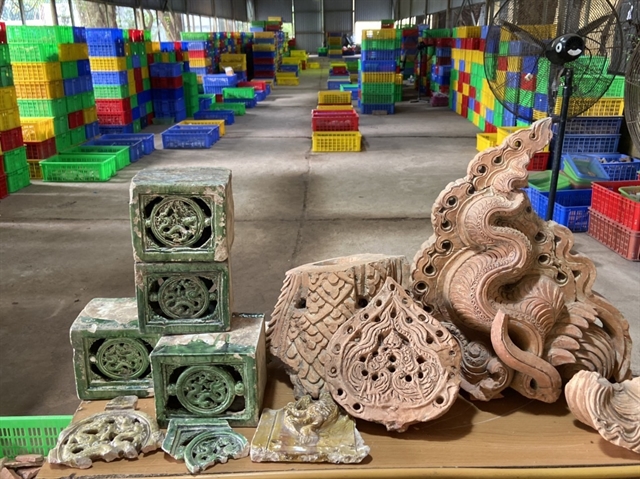
|
| Scientists have discovered many unique artifacts, including a large dragon crest and terracotta piece from the Lý Dynasty. VNA/VNS Photo |
The discovery of a large terracotta dragon statue, even larger than the dragon statues found at the excavation relic site at 18 Hoàng Diệu Street, shows that there may be large-scale and important architecture from the Lý Dynasty buried here.
Scientists did not find any artifacts but only a little brownish yellow clay, directly overlapping on the pre-Thăng Long cultural layer.
For the Trần Dynasty, architectural vestiges have been found on a smaller scale. The numerous finds of burnt traces of ash suggests a history of wars in the late Trần dynasties in the 14th century that caused serious fire damage many times.

|
| A water sewer from the Đại La era in the 7th-9th century was discovered during the excavation. VNA/VNS Photo |
Scientists said they could only recognise clearly one architectural vestige in the form of a water pipe as the others were too small to identify.
For the Lê and Lê Trung Hưng dynasties, the finds have led to many new hypotheses.
There are traces of a floor and the foundations of pillars from the Later Lê Dynasty. The pillar formation running from north to south suggests a corridor-like structure similar to those discovered during 2013 and 2014 at the Đoan Môn Gate excavation site.
This would also mean the main architectural space of Kính Thiên Palace during the Early Lê Dynasty behind the platform of the palace was somewhat narrower than the front.
From the Lê Trung Hưng period, scientists found an architectural complex with a large columnar foundation to the west and garden architecture to the east.
The columnar structure was likely located on the Ngũ Đạo axis straight through the Đoan Môn Gate - Kính Thiên palace area.
The scientists also said it was very likely a "gate" to another palace would have been located at the centre of Thăng Long Citadel. According to ancient writings and maps, Cần Chánh Palace stood behind Kính Thiên Palace.
If the "gate" hypothesis is true it would mark the beginning of a second important architectural area on the central axis of the citadel: Cần Chánh Palace is thought to have been the court of Emperor Lê Trung Hưng.
According to Professor Lưu Trần Tiêu, chairman of the National Cultural Heritage Council, the excavation results had contributed to confirming the ancient citadel and the relic site at 18 Hoàng Diệu as the centre of the Thăng Long Imperial Citadel.
"It was the centre of power which was continuously developed for more than 1,000 years," the professor said.
Professor Tiêu proposed excavating the central axis of Đoan Môn - Kính Thiên - Hậu Lâu - Bắc Môn in 2020 and the following years to collect more documents for the restoration of Kính Thiên Palace.
He also said that the unearthing of a large sewage system was an important find and the most prominent discovery at the site of Kính Thiên Palace.
Tiêu suggested expanding the dig to clarify the scale of this work.
Meanwhile, Associate Professor Trần Đức Cường, chairman of the Viêt Nam Association of Historical Sciences, gave some stratigraphical analysis saying that the excavated pit reflected the historical depth of Thăng Long-Hà Nội, dating back from the pre-Thăng Long period through the Lý, Trần, Later Lê, Lê Trung Hưng and Nguyễn dynasties.
Cường also suggested continuing the excavation of Thăng Long Imperial Citadel to proceed with the plan to restore Kính Thiên Palace.
He proposed opening a limited excavation area in front of Kính Thiên Palace in parallel with an expansion to the whole excavation area in 2019.
Affirming the historical and cultural value of the finds, Professor Nguyễn Quang Ngọc, director of the Centre for Hà Nội Study and Capital Development, proposed expanding the excavation site.
"If we excavate towards the west, we can reach the location of the palaces of Long An and Nguyệt Minh which are said to have been built in the same year as Thăng Long Imperial Capital." VNA/VNS

